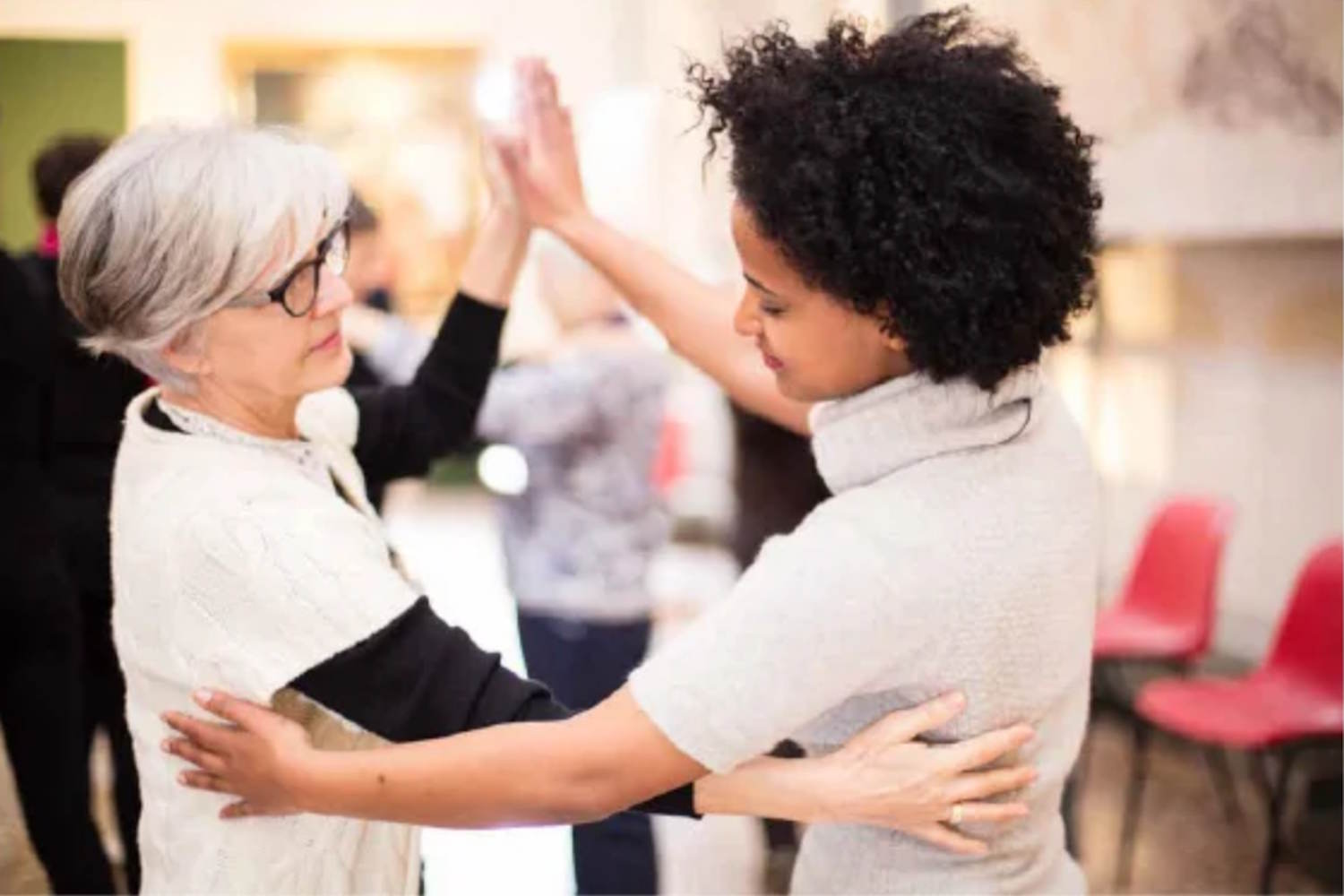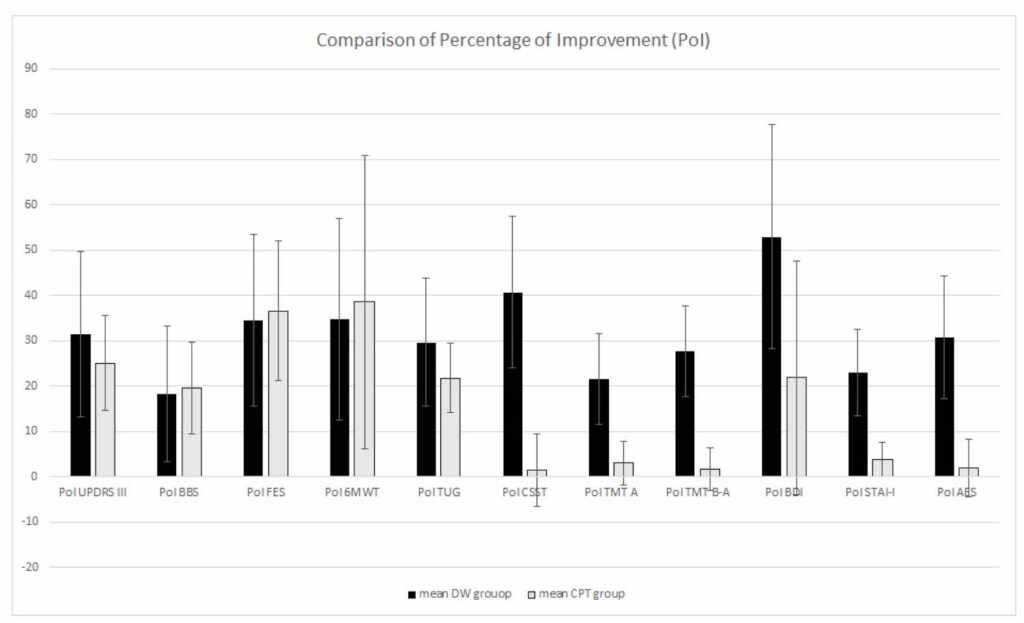Dance is not only a recreational art, it can also be therapeutic, even for patients suffering from Parkinson's disease: a study has in fact demonstrated that 'Dance Well', an artistic and multisensory dance intervention based on art and music, significantly contributes to the improvement of patients' movements, and therefore of their quality of life.

©Dance Well
Table of contents
Dancing is not just a fun activity, but it also provides significant benefits for both the body and mind. A study on Parkinson’s disease conducted by the Neurorehabilitation Department of Villa Margherita KOS (Vicenza, Italy) has shown that ‘Dance Well’, an artistic and multisensory dance program combining art and music, significantly improves movement and, consequently, the quality of life of patients.
This isn’t the first study to show the benefits of dance for Parkinson’s patients. For example, a 2020 study demonstrated that Argentine tango could improve posture and gait in those affected by Parkinson’s disease.
However, this latest study takes it a step further by identifying the specific parameters that a targeted dance program can address, making the treatment more tailored and potentially more effective.
What is Parkinson’s disease?
Parkinson’s disease is a neurodegenerative condition characterized by muscle stiffness, resistance to passive movement, and resting tremors, which make it difficult to initiate and complete movements.
These symptoms often lead to balance issues, a shuffling gait, and a hunched posture. Depression may also occur, sometimes as an indirect result of the person’s deteriorating health, and speech can become slower.
A recent study focused on speech changes in early-stage Parkinson’s patients has shown that alterations in language can occur before the more typical symptoms appear. This finding suggests that some individuals with early-onset Parkinson’s may speak in a distinct way, different from their usual manner.
Another debilitating symptom is chronic pain, which affects between 70% to 80% of patients. A recent study from the University of Verona-Italy has been able to differentiate this chronic pain from unrelated chronic pain, a distinction that can help doctors diagnose and treat patients more effectively, improving their quality of life.
Currently, there is no cure for Parkinson’s, but certain treatments have been shown to effectively manage and slow the symptoms, particularly by restoring dopamine levels, which are known to decrease gradually once the disease begins.
The ‘dance well’ study
As the study authors explain, the pilot research assessed the effectiveness, feasibility, and safety of a 4-week ‘Dance Well’ (DW) program for patients with early-to-middle stage Parkinson’s.
In total, 24 patients were recruited and randomly assigned to two groups, both participating in two sessions per week for 4 weeks. One group followed the DW program, while the other underwent conventional physical therapy (CPT). Data on demographics, biometric measures, and clinical outcomes were collected.
To evaluate the effects of the treatment, the study examined motor parameters (Unified PD Rating Scale-III, Timed Up and Go Test, Berg Balance Scale, 6-Minute Walk Test, and Falls Efficacy Scale), cognitive parameters (Corsi Supra Span Test, Trail Making Test A and B-A), and emotional-motivational parameters (Beck Depression Inventory, State-Trait Anxiety Inventory, Apathy Evaluation Scale) before and after the rehabilitation program.
To assess treatment adherence and safety, the study also tracked dropout rates and any adverse events such as injuries or falls.
The surprising and encouraging results

©Brain Sciences
The study authors reported that all parameters improved in both groups. However, the DW group showed a greater improvement in attention and motivation-related measures. No dropouts, falls, or injuries were reported.
The results suggest that, for early-to-middle stage Parkinson’s patients, the ‘Dance Well’ program is a feasible, safe, and beneficial complementary treatment, improving motor, cognitive, and emotional-motivational symptoms.
Additionally, it could enhance social interactions for patients, who are often isolated due to their physical limitations, especially in the later stages of this challenging disease.
The project is led by the Municipality of Bassano del Grappa, K3 – Tanzplan Hamburg, Le Gymnase CDCN Roubaix, La Briqueterie CDCN Vitry sur Seine, Tanec Praha, Lithuanian Dance Information Centre, the Fitzcarraldo Foundation, and the University Ca’ Foscari of Venice, and is supported by the European Union’s Creative Europe Program.
The study was published in Brain Sciences.
Source: Brain Sciences
